Filter by
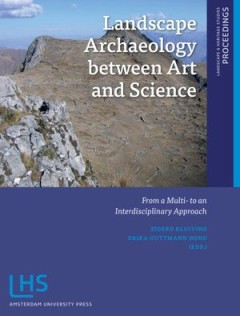
Landscape Archaeology between Art and Science
Researchers in landscape archaeology use two different definitions of landscape. One definition (landscape as territory) is used by the processual archaeologists, earth scientists, and most historical geographers within this volume. By contrast, post-processual archaeologists, new cultural geographers and anthropologists favour a more abstract definition of landscape, based on how it is perceiv…
- Edition
- -
- ISBN/ISSN
- 9789089644183
- Collation
- -
- Series Title
- -
- Call Number
- 930.1 KLU l
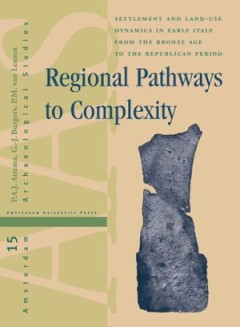
Regional Pathways to Complexity
Synthesizing almost 30 years of Dutch archaeological research in central and southern Italy, this book discusses and compares settlement and land use patterns from the late protohistoric period to the late Roman Republic. Exploring both social and environmental explanations, as well as interregional parallellisms and divergences, the authors take a multi-scalar approach (from micro-regional to …
- Edition
- -
- ISBN/ISSN
- 9789089642769
- Collation
- -
- Series Title
- -
- Call Number
- 930.1 BUR r
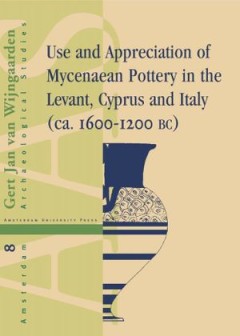
Use and Appreciation of Mycenaean Pottery in the Levant, Cyprus and Italy
Pottery made in the aegean during the Late Bronze Age has been found widely distributed in many parts of the Mediterranean. At some four hundred sites outside Greece, Mycenaean dinner and storage vessels, as well as some figurines have been discovered. As such, this class of archaeological artifacts constitutes one of the main sources by which to study Mycenaean trade and interregional contact.…
- Edition
- -
- ISBN/ISSN
- 9789053564820
- Collation
- -
- Series Title
- -
- Call Number
- 930.1 WIJ u

Holocaust Archaeologies: Approaches and Future Directions
Holocaust Archaeologies: Approaches and Future Directions aims to move archaeological research concerning the Holocaust forward through a discussion of the variety of the political, social, ethical and religious issues that surround investigations of this period and by considering how to address them. It considers the various reasons why archaeological investigations may take place and what iss…
- Edition
- -
- ISBN/ISSN
- 978-3-319-10640-3
- Collation
- XVII, 358
- Series Title
- -
- Call Number
- 900 CAR h
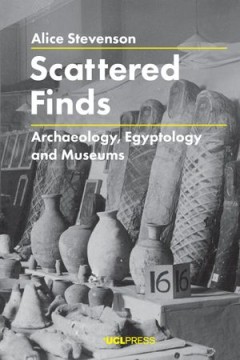
Scattered Finds : Archaeology, Egyptology and Museums
Scattered Finds explores the politics, personalities and social histories that linked fieldwork in Egypt with the varied organizations around the world that received finds. Case studies range from Victorian municipal museums and women’s suffrage campaigns in the UK, to the development of some of the USA’s largest institutions, and from university museums in Japan to new institutions in post…
- Edition
- -
- ISBN/ISSN
- 9781787351400
- Collation
- -
- Series Title
- -
- Call Number
- 900 STE s

Identity and Heritage: Contemporary Challenges in a Globalized World
This book will suggest new agendas for identity and heritage studies by means of presenting contentious issues facing archaeology and heritage management in a globalized world. The book is not only present the variability of heritage objectives and experiences in the New and Old World, and opens a discussion, in a shrinking world, to look beyond national and regional contexts. If the heritage s…
- Edition
- 1
- ISBN/ISSN
- 978-3-319-09688-9
- Collation
- X, 172
- Series Title
- -
- Call Number
- 930.1 IDE
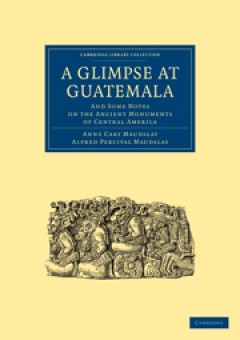
A Glimpse at Guatemala, and Some Notes on the Ancient Monuments of Central Am…
Alfred Percival Maudslay (1850–1931) was a British colonial administrator and archaeologist who is widely considered the founder of modern Mesoamerican archaeology. After graduating from Trinity Hall, Cambridge, in 1872 Maudslay made his first visit to Guatemala before becoming a colonial administrator working in Trinidad and Fiji. After retiring from colonial service in 1880 he returned to G…
- Edition
- -
- ISBN/ISSN
- 9780511686962
- Collation
- -
- Series Title
- Cambridge Library Collection - Archaeology
- Call Number
- -

The Archaeology of Iran from the Palaeolithic to the Achaemenid Empire
The Archaeology of Iran from the Palaeolithic to the Archaemenid Empire is the first modern academic study to provide a synthetic, diachronic analysis of the archaeology and early history of all of Iran from the Palaeolithic period to the end of the Achaemenid Empire at 330 BC. Drawing on the authors’ deep experience and engagement in the world of Iranian archaeology, and in particular on Ira…
- Edition
- -
- ISBN/ISSN
- 9781000570908
- Collation
- -
- Series Title
- -
- Call Number
- -

Tinqueux « la Haubette » (Marne, France)
The Neolithic site of Tinqueux ‘la Haubette’ (Marne) dated to the ‘Blicquy/Villeneuve-Saint-Germain’ (5000-4700 cal. BC) is composed of five houses, further series of pits and the remains of an oven. An abundance of finds has allowed us to explore a number of themes in greater detail. The first concerns the potential singularity of the site due to its very easterly location within the B…
- Edition
- -
- ISBN/ISSN
- 9781789699777
- Collation
- -
- Series Title
- -
- Call Number
- -
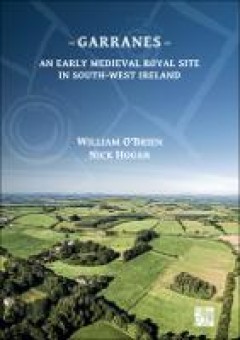
Garranes: An Early Medieval Royal Site in South-West Ireland
Ringforts were an important part of the rural settlement landscape of early medieval Ireland (AD 400–1100). While most of those circular enclosures were farmsteads, a small number had special significance as centres of political power and elite residence, also associated with specialized crafts. One such ‘royal site’ was Garranes in the mid-Cork region of south-west Ireland. In 1937, arch…
- Edition
- -
- ISBN/ISSN
- 9781789699203
- Collation
- -
- Series Title
- -
- Call Number
- -
 Computer Science, Information & General Works
Computer Science, Information & General Works  Philosophy & Psychology
Philosophy & Psychology  Religion
Religion  Social Sciences
Social Sciences  Language
Language  Pure Science
Pure Science  Applied Sciences
Applied Sciences  Art & Recreation
Art & Recreation  Literature
Literature  History & Geography
History & Geography